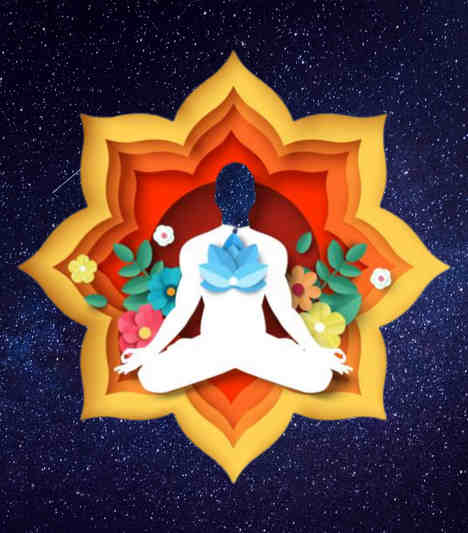Today we are discussing complete information about Padmasana The name Padmasana is derived from the word Padma, which means lotus flower. Any yogi or wise man practicing meditation is always in Padmasana. The best asana is done while sitting. For the muscles and joints in your legs and hips, Padmasana is a really good sitting position. Not only this, but the mythological books also say that if you sit in Padmasana consistently, you can get rid of many of your ailments.
What is Padmasana?
Padmasana is a type of yoga
asana, which is done while sitting. It is composed of the Sanskrit words padma,
meaning lotus, and asana, meaning posture. Lotus is highly revered in Indian
culture. It is said that just as a lotus retains its beauty even after growing
in mud, Padmasana enables the seeker to maintain mental peace by avoiding
social vices. Sitting in Padmasana while doing Pranayama is frequently advised.
1.
Padmasana: The benefits of this Yoga
meditation
Padmasana benefits as follows:
1. Calm the mind
Yoga requires one's mind and
body to come together in harmony. This requires concentration while doing yoga.
Yoga postures known as Padmasana are considered important for meditation. It can
help with mental clarity and relaxation.
2. Conserving energy
If feeling tired, one can
resort to Padmasana instead of sitting on a chair. According to research
published in the International Journal of Yoga, doing Padmasana for 20 minutes
has a positive effect on energy levels.
3. Get more rest
There are many causes of
insomnia, including stress or physical or mental fatigue. Allopathic medicines
cannot treat it. In such cases the benefits of Padmasana can help improve
sleep. According to research, Padmasana can help reduce stress and improve sleep.
4. Good for the knees
Knees and ankles should be
fully extended and bent in Padmasana. A unique type of fluid is released when
the joints are stretched while sitting. This liquid is believed to help reduce
muscle stiffness and reduce the likelihood of conditions such as arthritis.
5. Beneficial for periods
During menstruation, it is
common to experience cramping, back pain, heaviness, fatigue, irritability and
other symptoms. Yoga's Padmasana posture can help alleviate symptoms in this
case. As already discussed in the text, Padmasana helps calm the mind. In
addition, pain associated with menstruation as well as muscle stiffness, back
pain etc.
6. Padmasana Benefits for Pregnant Women
A woman can benefit from
Padmasana even when she is pregnant. As we mentioned earlier, this pose has the
ability to reduce stress, reduce muscle stiffness and increase physical energy.
There is currently no scientific data to indicate whether its benefits will be
given to expectant mothers during pregnancy. Additionally, before doing this
position while pregnant, seek medical advice.
2. How to do Padmasana: The steps to this Yoga meditation
Please read carefully the
Padmasana instructions we have given below:
- Sit in Padmasana. As you inhale, lengthen your spine and gently press your hands into the floor.
- As you inhale, lift your right leg and bring it over your left thigh.
- And then do the same with the opposite leg.
- You are now in Padmasana.
- In this position, your right hip and knee will be under tension.
- Stay in this position as long as it is comfortable for you.
3. How to stay healthy while
practicing Padmasana: Guidelines for staying fit and healthy during this
practice
You can do Ardhapadmasana if
you have never done Padmasana and feel uncomfortable with the method described
in the previous section. You can accomplish this in the following ways:
- Sit on the yoga mat, legs crossed.
- Now place the heel of the right foot on the thigh of the left foot.
- Place your hands on your knees and do Jnana Mudra with your fingers.
- Elbows should remain straight.
- Remember that in full Padmasana the neck and waist must remain straight.
- Now inhale deeply while exhaling slowly.
- After three to five minutes, switch to the other leg and repeat the process.
- Try full Padmasana when your training is complete.
4. Tips for practicing Padmasana safely and effectively
While doing Padmasana, you should always keep in mind some key considerations and safety measures:
- Do not do this pose if you have an injury or pain in your knees or ankles.
- Even if you are a beginner, you should always practice this asana under the guidance of a qualified yoga instructor.
- Do not do Padmasana even if you feel severe pain or tension in any part of your body.
- Take your practice to your skill level.
- Avoid doing this if you have varicose veins.














0 Comments